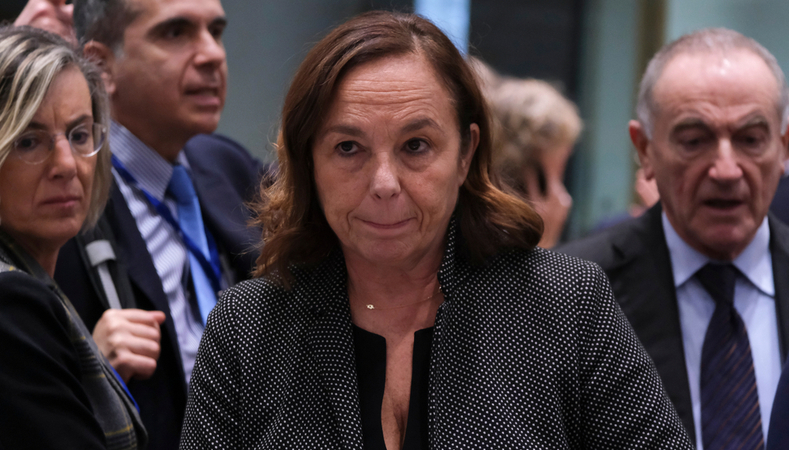Italian Interior Minister in a mission to Libya trying to stop migration

The Italian Minister of the Interior, Luciana Lamorgese, went to Tripoli for a lightning mission. After the recent official visits of his foreign colleague Luigi Di Maio and above all of Prime Minister Mario Draghi, Lamorgese flew to Tripoli to try to strengthen the “bilateral cooperation” on immigration with the leaders of the new Libyan government. Lamorgese met the President of the Presidential Council, Mohamed Younis Ahmed al Menfi, Prime Minister Abdelhamid Dbeibah, and his counterpart from the Interior, Khaled Tijani Mazen.
In the three summits, the Italian Interior Ministry reaffirmed the solidity of the link between Italy and Libya and recognized the role of the new government of national unity in stabilizing the country: “I am sure that Libya will be able to exploit this moment by proceeding with conviction towards its full stabilization”, Lamorgese said, reiterating that” Italy is ready to support all-out collaboration projects, also asking the European institutions to lend the utmost and concrete support to the Government of Tripoli.”
Traffickers and human rights. Officiality aside, Lamorgese addressed with her interlocutors the issue of immigration by sea from the Libyan coasts and the fight against the criminal organizations, but also that of respect for the human rights of migrants and refugees. Italy, she explained, works for greater EU involvement alongside Libya, which also passes through the activities of IOM and UNHCR. She has proposed to organize a meeting in Rome soon, with the participation of the Libyan authorities.
For their part, the Libyans are asking for concrete help, through “the exchange of modern anti-terrorism technologies and the training of pilots and coastguards”. Interior Minister of Libya Mazen stressed, emphasizing the common history of cooperation between the two countries “in the security and police sectors”. Mazen insisted on the need for a multi-level partnership to combat terrorism and organizations that exploit immigrants and engage in human trafficking.
The Libyan government expects new funds for training and cooperation courses on police aviation, coastal security, and other specialized courses. Aid that Italy has provided in the past through the controversial Memorandum instrument, contested by humanitarian associations, according to which the over 785 million euros allocated by our country have not prevented shipwrecks, allowing instead the push-back of 50 thousand people in Libya, of 12 thousand of which in 2020 only.
Meanwhile, the Interior Ministry of Rome thinks about the condition of migrants, some thousands, held in Libyan camps. According to Italian media, a humanitarian corridor “with a large number of migrants” is being prepared to be transferred to Italian soil. And the minister is working on a second mission: “I am counting on returning to Tunisia also with the EU Commissioner Johansson”, says Lamorgese, who aims to restart the Malta agreement on redistribution and believes that Europe must give “a great proof of cohesion “by finding in the new Pact on Immigration and Asylum” a balance between the principle of responsibility and effective solidarity “between member states.
The fear is that of a sharp increase in departures. “Unfortunately, we expect migratory flows from Libya to resume with the summer and we need to prepare,” Filippo Grandi, UN high commissioner for refugees said in recent days in Rome. For this reason, the three institutional visits to Tripoli in a short time have tried to strengthen a piece of what Lamorgese defines as a “constant dialogue” with the countries of departure and transit of migrants and with the European Union.




